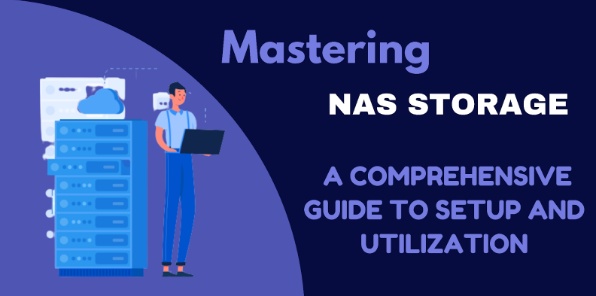Nowadays, with a plethora of digital content at our disposal, storage space has become critical for everyone. And if you have a small business or personal needs with a considerable amount of data, you need a secure and reliable storage solution. That's where Network-Attached Storage or NAS comes in, providing centralized storage accessible to multiple devices. In this blog post, we'll take you through the steps of setting up and using NAS storage, from choosing the right device to securing your data.
Choosing the Right NAS
Firstly, start by evaluating your needs regarding storage capacity, performance, and budget. These devices typically come with different storage capacities, from a few hundred GBs to multiple terabytes. You must also consider the type of NAS you want: consumer-grade for personal use or business-grade for SMBs. Lastly, the connectivity options, such as Ethernet, USB or eSATA, may affect your decision and usage.
Setting Up the NAS
Once you have purchased your device, follow the manufacturer's instructions. Typically you'll need to set up the device's hardware, configure the network settings, and the storage itself, such as defining the number of disks, RAID type, and security features such as permissions and user privileges. Be sure to keep the device firmware and software up to date, and make regular backups of your data.
Accessing the NAS
You can access your NAS through different devices and platforms, such as laptops, desktops, mobile devices, and streaming devices like Chromecast and Apple TV. You can either access the NAS from your local network or remotely over the internet. Some NAS devices come with mobile apps or web interfaces, which add convenience and ease of access.
Securing the NAS
Even though NAS offers secure and reliable storage, you must still ensure that your data is safe from unauthorized access, data breaches or data loss. Ensure that your NAS devices come with security features such as data encryption, firewalls, antivirus software, and intrusion detection systems. Additionally, you can consider some best practices such as using strong passwords, separating admin and user accounts, and setting up automatic backups and disaster recovery options.
Maintaining the NAS
To ensure that the NAS storage solutions continue to operate smoothly, you must conduct regular maintenance tasks such as ensuring that firmware and security updates are up to date, checking disk health, monitoring storage usage, and ensuring that cables and network connections are working correctly.
Tips for Using Your NAS System
Here are some tips for using your NAS system to make the most out of your storage device:
- Set up automatic backups to ensure that you don't lose data in case of hardware failure or theft.
- Use RAID (redundant array of independent disks) to safeguard your files against disk failure.
- Keep your system and software updated to improve performance and security.
- Organize your data effectively to make it easy to find and access.
Conclusion
In conclusion, NAS offers a convenient, easy-to-use and secure method for storing and accessing your data. By following these steps to set up and use NAS, you can ensure that your data is safe and accessible when you need it. Remember to consider the important aspects such as hardware, software, connectivity, security, and maintenance to get the most out of your NAS setup.


No comments yet